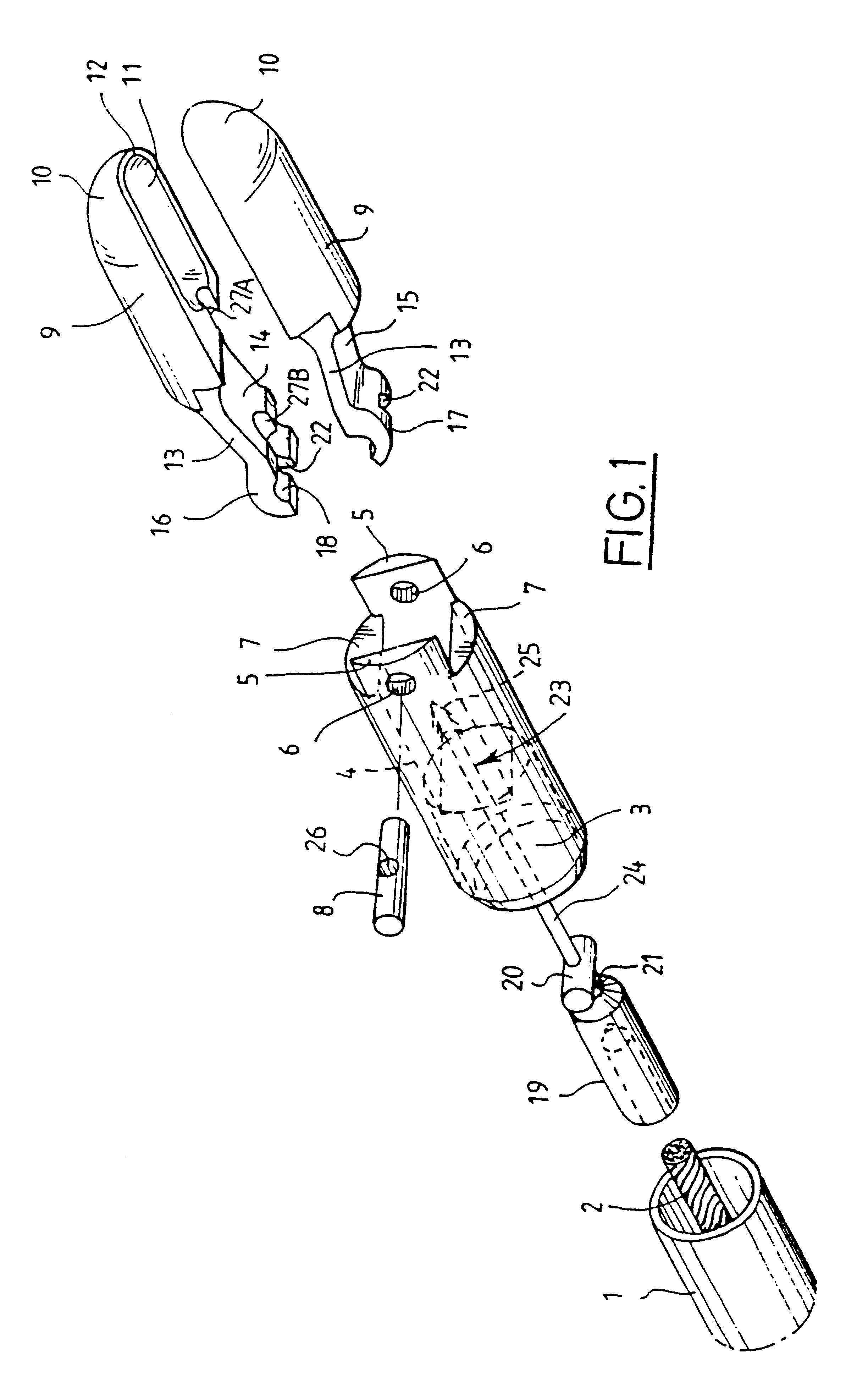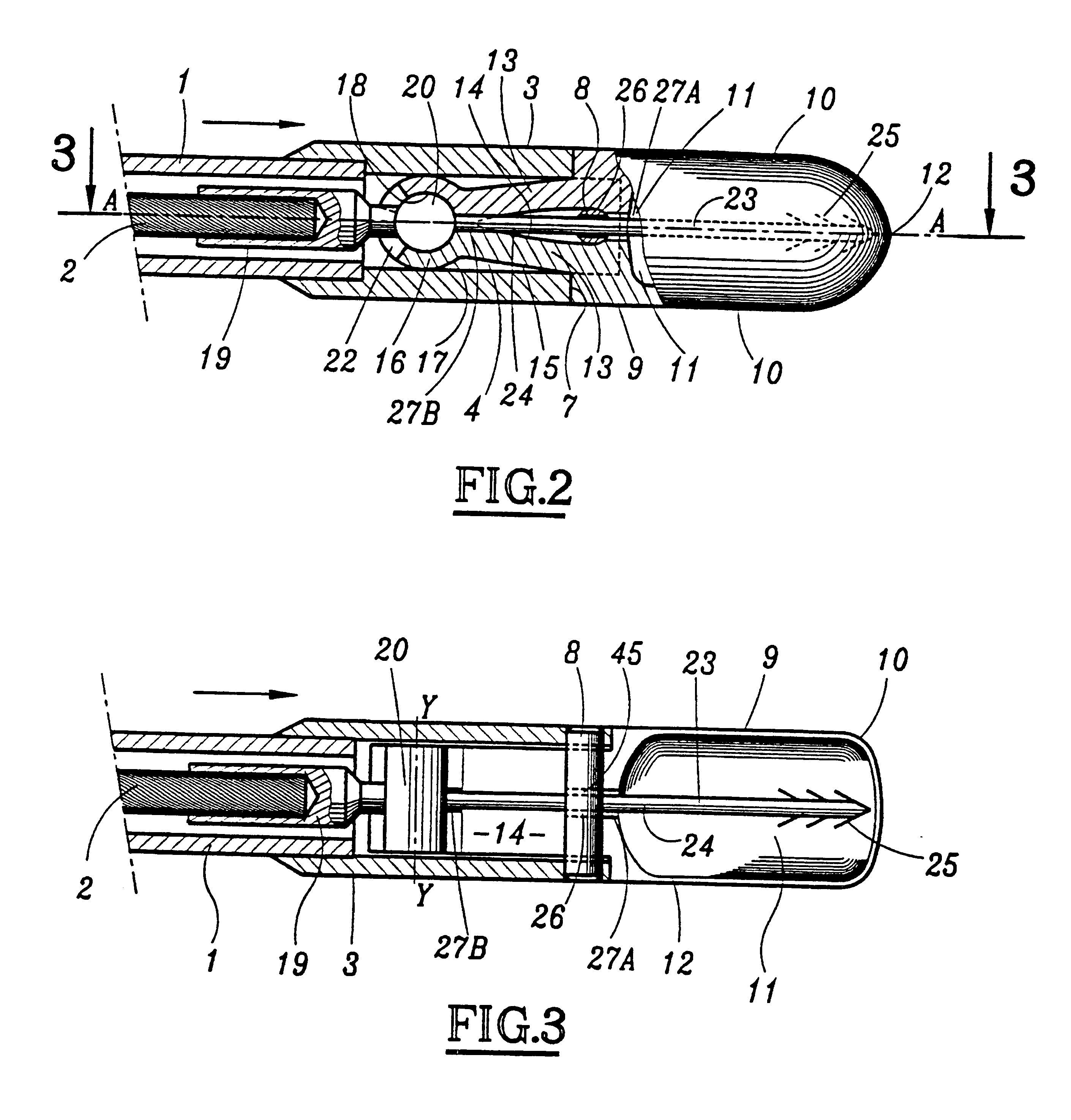Forceps, in particular biopsy forceps
a forceps and biopsy technology, applied in the field of forceps devices, can solve the problems of difficult fitting, wear and failure, and other components, too, and achieve the effect of easy adjustment and adjustment, and easy adjustmen
- Summary
- Abstract
- Description
- Claims
- Application Information
AI Technical Summary
Benefits of technology
Problems solved by technology
Method used
Image
Examples
Embodiment Construction
The biopsy forceps shown in the figures has an elongate sheath 1 inside which a semi-rigid cable 2 may move longitudinally, one of the ends, not shown, of which cable is connected to a maneuvering grip of the usual type in this kind of forceps. Advantageously, means are provided for holding one or other of the sheath and the cable in position with respect to the organ to be treated, and for moving whichever of the sheath and the cable is not being held.
The sheath 1 has, on its end, a metal tubular element 3, the outer surface of which is cylindrical, and which includes a central passage 4 of rectangular or square cross section. At its end remote from the sheath, the cylindrical component 3 is cut into the form of crenels so as to form two extensions 5 through which pass aligned holes 6, the common geometrical axis of which is located slightly above the plane of the two lowermost edges 7 of the crenels. Thus, the bottom part of the holes 6 lies substantially in the plane of these low...
PUM
 Login to View More
Login to View More Abstract
Description
Claims
Application Information
 Login to View More
Login to View More - R&D
- Intellectual Property
- Life Sciences
- Materials
- Tech Scout
- Unparalleled Data Quality
- Higher Quality Content
- 60% Fewer Hallucinations
Browse by: Latest US Patents, China's latest patents, Technical Efficacy Thesaurus, Application Domain, Technology Topic, Popular Technical Reports.
© 2025 PatSnap. All rights reserved.Legal|Privacy policy|Modern Slavery Act Transparency Statement|Sitemap|About US| Contact US: help@patsnap.com



